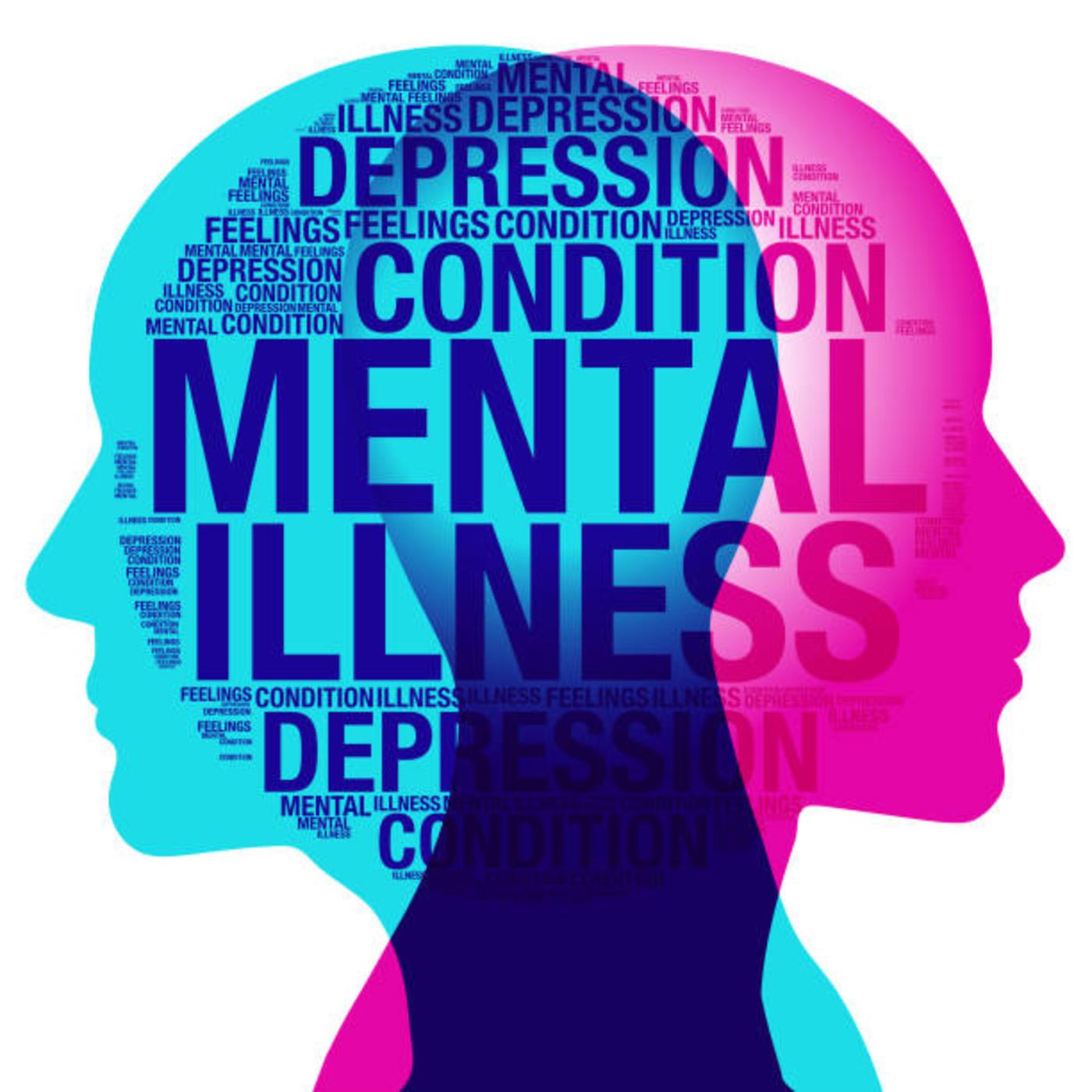Mental health concerns everyone. It affects our ability to cope with and
manage change, life events, and transitions such as bereavement or retirement.
All human beings have mental health needs, no matter what the state of their
psyche. Mental health needs can be met in a variety of settings including
acute hospital settings, primary care settings, self-help groups, social
services, and of course counseling and psychotherapy.
Ways of defining mental health are discussed as a means
of drawing attention to the complex and diverse understanding of what
constitutes mental illness.
Defining mental health and illness
Psychological distress is to some extent necessary for people to function;
without the heightened awareness and sensitivity that psychological distress
brings to social situations and life experiences, we may find ourselves risking
our lives at one extreme and underperforming at the other. However, there
is a point at which psychological distress can topple over into what might be
termed or diagnosed as a mental disorder. At what point health-promoting
and seemingly ‘normal’ responses can be defined and classified as mental
illness is, as one might expect, debatable and highly contentious. Mental
health and mental illness can be thought of as a continuum, rather than a
polarised dichotomy, with people positioned at various points depending on
life events (external factors), genetic inheritance, and stages of development
(internal factors). There are many definitions of mental health, the majority
of which are simplistic, partial, and inevitably subjective. To locate and
subscribe to one definition not only reinforces the belief that the concept of
mental health can be pinpointed and concretized, but of course, it is in itself
also too simplistic and partial.
> Mental health is indicated by the attitudes of the individual towards
themselves
> Mental health is expressed in the individual’s style and degree of growth,
development or self-actualization
> Mental health is based on the individual’s relation to reality in terms of
autonomy, perception of reality, environmental mastery
> Mental health is the ability of the individual to integrate development and
differing aspects of themselves over time.
Having ascertained that mental illness is not a neutral, value-free, scientifically
precise term and as such cannot be clearly defined, we turn now to the issue
of normal and abnormal, or, as most commonly referred to, the sane and the
insane. It is not easy to distinguish the normal from the abnormal, indeed
there is a great deal of conflicting evidence relating to the use of such terms
as ‘sanity, insanity, mental illness, and schizophrenia’ (Rosenhan, 2001).
Moreover, it is open to question as to whether the diagnoses of mental illness
reside in the patients themselves or in the environment. Rosenhan says: ‘We
might like to believe that we can tell the normal from the abnormal, but the
evidence is not compelling . . . there is a great deal of conflicting data on the
reliability, utility, and meaning of such terms as “sanity”, “insanity”, and “mental
illness”, and “schizophrenia”’ (2001, p. 70). He goes on to ask: ‘Do the salient
characteristics that lead to diagnoses reside in the patients themselves or in
the environment and contexts in which the observers find them? Despite
For these important questions, it is of course necessary to have some way of
monitoring the extent to which an individual’s behavior deviates from what
is viewed as ‘the norm’, in order to ascertain a framework for structuring
treatment and care.
Classifying mental illness
Manning (2001, p. 77) argues that the process of classification is ‘fundamental to
any science’. The two main classification systems used within mental health
care are the International Classification of Diseases (ICD-10) developed by
the World Health Organization (WHO, 1992) and the Diagnostic and Statistical
Manual for Mental Disorders (DSM-IV) (American Psychiatric Association,
1994) (discussed in detail in Chapter 2). Different epochs foster distinct types
of mental disorders in their members. The mental disorders that characterize
individuals living in contemporary society have implications for all health
practitioners including counselors and psychotherapists. Psychiatrists have
for many years distinguished between the major mental illnesses, known as
the psychoses (such as schizophrenia), and the neuroses (such as anxiety
disorders and phobias). Many counselors and psychotherapists are already
familiar with these terms; however, it is perhaps worth outlining the contemporary thinking around these and other diagnostic categories.
Psychoses are diseases in which the individual’s capacity to recognize
reality and their ability to make appropriate communications and judgments
are seriously impaired. They are sometimes accompanied by the presence of
delusions and hallucinations (Craig, 2000). Psychoses can be further divided
into functional and organic: the former is associated with a primary disturbance of mood, normally accompanied by some psychotic symptoms (for example schizophrenia); the latter refers to brain pathology that results in
psychotic symptoms (as in dementia).
Many psychological theorists have written on the subject of neuroses:
Freud (1914) originally wrote of neuroses as repressed conflicts between ego
instincts and sexual libido, whereas Jung saw neuroses as being closely
related to the individuation process. Jacoby (1990, p. 97) states ‘They
often have an ultimate perspective purpose, since their function is to coerce
the individual into a new attitude that will further the maturation of his
personality. Whereas Horney (1991) defines neurosis as a disturbance in
one’s relation to self and to others, neurotics can really only be differentiated
from the general population by the degree to which they experience disabling
symptoms. Thus, it could be said that where the psychotic person has an
uncertain grasp on reality, the neurotic experiences a heightened and debilitating level of stress resulting in such disorders as, for example, obsessive
compulsive disorder (OCD) and phobias.
In the recent past one specific psychiatric diagnosis, that of personality
disorder, has received a great deal of professional and media attention. One of the most contentious diagnoses, a personality disorder is generally defined
as consisting of deeply ingrained, enduring behaviors leading the person to
behave in socially unacceptable ways. Manning (2001, p. 76) contests that
‘personality disorder is the site of considerable psychiatric controversy’, stating
that it has been ‘separated in British legislation from the two conventional
conditions of mental illness and mental disability, as a third type of mental
disorder – psychopathy’. Sometimes referred to as moral insanity (and occasionally interpreted as borderline), it is the behavior of such individuals that
separates them from the more easily identifiable disturbed mental processes
and obvious organic malfunctioning diagnosed in the mentally ill or mentally
disabled. In psychoanalytic terms individuals with a personality disorder
experience instability of identity leading to a mixture of alienation from
others, feelings of grandiosity, dependency, and disdain. There is a tendency
to polarise people and project primitive emotions of rage and shame.
Personality disorders can be further classified into sub-groups, three of the
most common being anti-social personality disorder (ASPD), paranoid
personality disorder (PPD), and emotionally unstable personality disorder
(most often associated with ‘borderline personality). There are few treatments
that are known to be successful in the management of personality disorders.
Where treatment is successful it is heavily reliant on the individual’s willingness
to accept responsibility for their actions, which in turn requires a degree of
introspection and honesty.
It is worth mentioning that classifications of mental disorders also draw
distinctions between common mental health problems and serious mental
illness (SMI). Unfortunately, attempts to distinguish common mental health
problems from serious mental illness have relied heavily on such markers as
the presence of a psychotic diagnosis, which as Ryrie and Norman (2004, p. 22)
point out, means that ‘SMI is synonymous with “psychoses” and common
mental health problems with “neuroses”’.
There is a further mode of understanding and organizing mental illness,
one that is very familiar to most counselors and psychotherapists, and is
linked to psychological schools of thinking such as psychoanalytic and
humanistic theories. Psychological frameworks have proved useful in helping
to determine treatment plans, and also enable the therapist and client to create a
a shared understanding of how the client’s life processes are unfolding.
Understanding mental illness
A number of psychological frameworks have been influential in informing
the theory and practice of mental health, and whilst they propose distinct
explanations for the etiology of mental illness and in turn imply different
treatment modalities, they also overlap. Those most often referred to are the psychodynamic, behavioral, biological and medical, humanistic, and systemic
(Dallos, 1996). As previously noted, counselors and psychotherapists are already
well acquainted with these psychological frameworks and have often been
trained as practitioners in at least one of the above modalities. Nevertheless, for
the purpose of this book, it might be helpful to revisit each theoretical orientation and outline the way in which mental illness is understood in each.
Biological and medical frameworks (sometimes referred to as the disease
model) view psychological problems as resulting, in the main, from physical
causes such as brain defects, hereditary factors, or as the results of accidents
or injury. Recent developments in this area suggest that disorders such as
schizophrenia is linked to deficits in neurotransmitters located in the brain
and can be inherited through genetic make-up. Further, diseases such as
depression is attributed to changes in serotonin levels in the brain or a
similar chemical imbalance. The biological model draws on traditional medicine
and attempts to identify the presence of a ‘stable’ phenomenon called mental
illness through scientific objectivity. One of the consequences of viewing
mental illness in this manner is the belief that such illnesses can be identified
and classified (as in the Diagnostic and Statistical Manual for Mental Disorders
(American Psychiatric Association, 1994) and the International Classification of
Disease (World Health Organization, 1992)) (see Question 2.1). Additionally,
where a physical or biological cause is identified as the basis of a mental
disorder, treatments are in the main determined by a person’s biology,
leading to the administration of psychotropic drugs, alongside psycho-education
and electroconvulsive therapy (Dallos, 1996). There is little doubt that a
complex and dynamic interplay exists between the psychological and physical
dimensions of the self, and it is well known that many physical diseases can
cause or precipitate mental illness, and vice versa (Martin, 1997). In the
words of Frances, First, and Widiger (1991) ‘There is much that is physical in
the so-called mental disorders and much mental in the so-called physical
disorders. Moreover, writers such as Kendell (1996) point out that: ‘The
the distinction between neurological disorders of the brain like Parkinson’s disease
and psychiatric disorders like schizophrenia are particularly artificial and can
only be understood in the light of the different historical origins of psychiatry
and neurology and the unfortunate nineteenth-century dichotomy between
the mind and brain’ (p. 23). This is the focus of the questions in Chapter 3,
which clearly defines the relationship between the mind and the body, articulating what effect the physical systems can have on the mind and vice versa.
The psyche–soma connection has been long debated and continues to be
developed and examined. However, biological frameworks have a tendency
to apply and are criticized for applying knowledge in an authoritative way
that encourages recipients of treatment to remain passive and submissive.
Other frameworks lean towards enabling the individual to learn for and
about themselves, although some are more rigid than others.

